During a recent EMBA class in HR and Leadership, we were discussing “Turnaround Leadership” by examining leaders from the early to mid-2000s, such as Alan Mulally at Ford and Anne Mulcahy at Xerox. There is much to be learned from leaders who transform their companies during economic or organizational downturns, just as there is to learn about leadership during our current unprecedented and unpredictable situation across the globe. Harvard Professor, Rosabeth Moss Kanter, created a model that illustrates what happens during organizational tough times, the spiral that ensues, and the subsequent turnaround behaviors that are required. There are some interesting parallels and takeaways when we compare turnaround leadership and what is going on around us with COVID-19.
The Cycle of Decline
Kanter’s model goes a bit like this: When organizations fall on tough financial times, a spiral begins. There is secrecy and denial, blame and scorn, avoidance and turf protection and passivity and helplessness. In a pandemic, you can see all of these symptoms simply from reading the memes and comments in your social media posts – ranging from denial and blame, to fear and hoarding of basic supplies. You can even see the very beginning of the spiral if you go back a few weeks in your social media feeds and follow it up to today. A key aspect of this decline is that once we, as a society, just like business organizations, cease to act together for the greater good, we are less able to effect change and we start to believe we are helpless. We enter a stage of ‘learned helplessness’, when we face a negative, seemingly uncontrollable situation and we stop trying to change our circumstances. Learned helplessness can occur even when we do have the ability to effect change, but believe that we have no control over the events happening to us. What do we do next?
The Remedy
Kanter’s model suggests that turnaround leaders do the following:
-
- Promote dialogue vs secrecy
We see this happening with simulations, models, facts, and advice surrounding the spread of the virus. Dialogue versus denial has increased dramatically in what we hear and read. We also know more so we share more.
-
- Engender respect vs blame
We may still be working on this one, though it has improved. We see evidence of working together toward solutions. We are shifting from blaming leaders for inaction or actions we do not like to respecting the role our leaders play and most certainly demonstrating respect and supporting those on the front line such as hospital staff.
-
- Spark collaboration vs turf protection
While we are practicing social distancing, we are also doing more to support one another at that safe distance. We have gone from washing our hands (still the very best advice) to also supporting our local restaurants by buying gift cards and ordering takeout. We are looking in on our elderly neighbors and helping them with their needs. Just today, I saw a post advertising online jobs for those recently out of work. We are starting to work together more. We seem to understand now that we could be virus carriers harming others, as well as victims, if we fail to follow prevention advice.
-
- Inspire initiative that eliminates helplessness
We have a long way to go and a lot of uncertainty still, however, initiative and routine root out that feeling of helplessness. We have the technology, so we are working remotely. We are following advice on social distancing and sanitation. We are learning to prioritize what we buy and who else might need it. We need to continue to establish good routines that show initiative and resilience.
Turnaround Leadership in Crisis
During our class, the teams made lists of take-aways and characteristics of the leaders we admire in turnaround stories. Some of those takeaways apply in organizations as well as our broader issues in society. These qualities of turnaround leaders include:
-
- Clarity around long-term direction
- Staying true to your values and the values of your organization or society
- Willingness to step up to an unexpected challenge
- Learning from others in areas of your shortcomings. Learning all you can to lead.
- Learning through direct engagement with the people you lead
- Ability to integrate complex issues into clear direction
- Courage to go against advisors and to withstand pressure when necessary
- Having processes and routines that ensure accountability
- Displaying humility
We see more leaders stepping up to make the tough calls. We are those leaders too. Which of these characteristics will you embrace as you lead your family, organization and community out of crisis and into the future?





